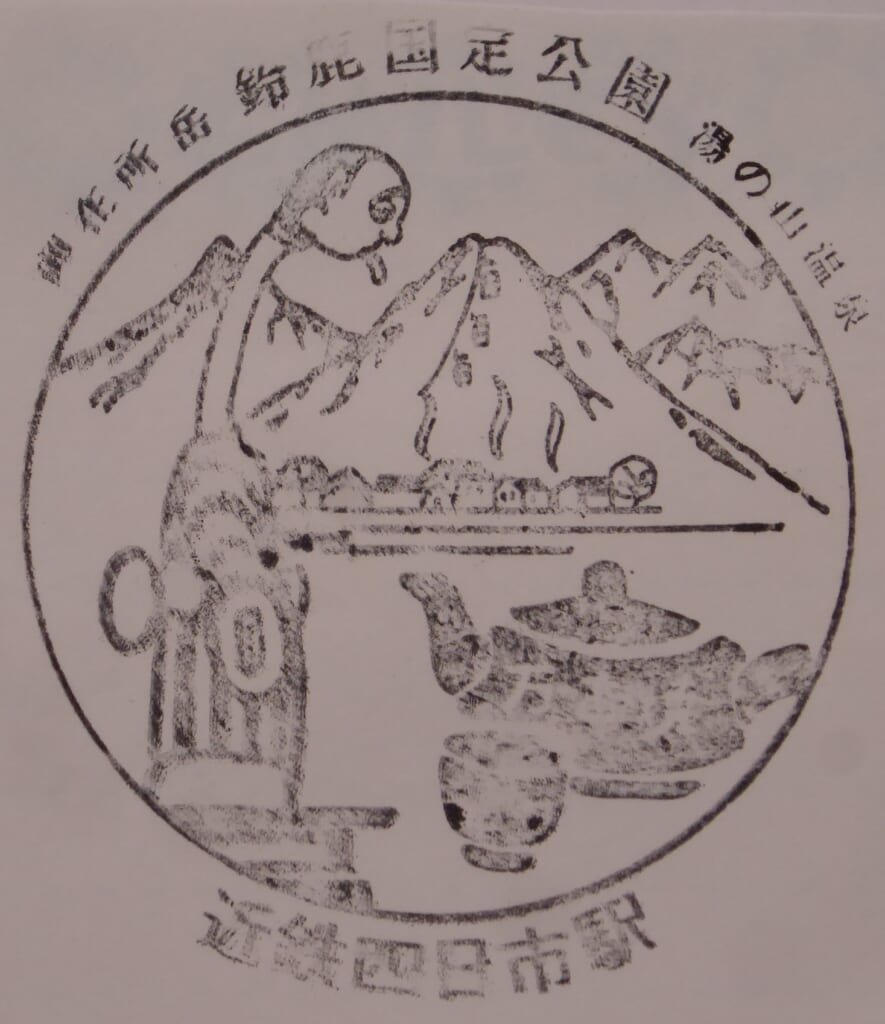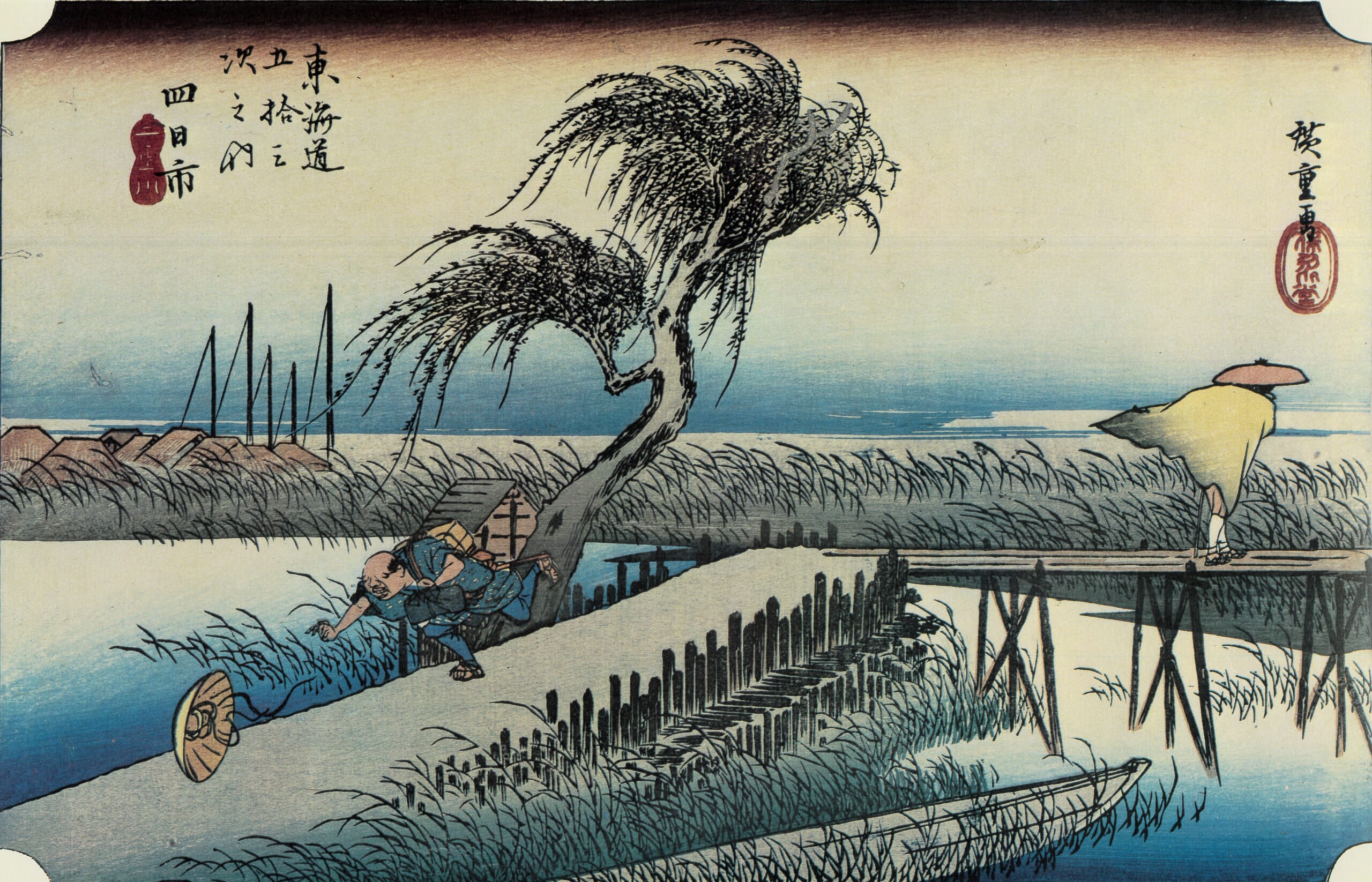Explanation of the Fifty-three Stations of the Tokaido 44 Yokkaichi
10.8km from Ishiyakushi to Yokkaichi, 34°54’16″N 136°32’53″E
Yokkaichi is the 43rd station on the Fifty-three Stations of the Tokaido.
Yokkaichi is in Yokkaichi City, Mie Prefecture.
This station has had a bustling market since before the Edo period.
A large market has been held on the 4th of every month since before the Edo period.
This station is a medium-sized station with two main inns, one side-inn, and 111 inns.
This area used to be called Nakonoura.
It was a land directly controlled by the shogunate, and the magistrate’s office was located there.
There is a “Ju-ri no ferry” between Miya and Yokkaichi.
The Tokaido Yokkaichi-shuku Museum exhibits various materials from the Sengoku period to the early Showa period, including historical documents from the old Tokaido post town, local performing arts materials, and the history of the Okadaya Kimono Store.
The museum building was formerly the Fussa Hospital, located on the site of the old Tokaido Yokkaichi-shuku wholesaler.
The walls and floors of this building have been repaired to make them earthquake-resistant, and display panels and cases have been installed.
“Tsuetsukizaka” is one of the most difficult spots on the Tokaido, third only to Hakone and Suzuka Pass.
It is said that Emperor Yamato Takeru was so exhausted on his way back from his eastern expedition that he used the sword he had at his waist as a walking stick to climb this steep slope.
Tsuetsukizaka is about 500meters south of Uchikawa River, and is about 100 meters from the top of the slope,
with a difference in height of just over 20 meters, making it one of the steepest slopes on the Tokaido route.
There is also an anecdote that at the end of the Taisho period, cars were unable to climb this slope,
so people had to borrow the strength of oxen from a private home at the bottom to get to the top.
This slope was difficult for both cars and pedestrians, so in the early Showa period, a gentle slope was built on the hillside.
Yokkaichi City has the largest population in Mie Prefecture, surpassing the prefectural capital, Tsu City.
It has been designated by the national government as a special city at the time of enforcement and a public health ordinance city.
The population of the urban employment area is the sixth largest in the Tokai region,
after Nagoya, Hamamatsu, Shizuoka, Gifu, and Toyohashi.
The name Mie Prefecture is derived from the name of the district to which Yokkaichi once belonged.
① “Hoeido version”
This is the area around the Mie River (Mitaki River).
The five masts standing beyond the village in the background on the left indicate that this is near the mouth of the river.
The first thing that catches your eye is a willow tree being violently blown by the wind and a man at its base, tossed about by the wind.
The bending of the willow branches indicates the strength of the wind in this region.
The way he rushes after his hat that was blown away and his facial expression are very amusing.
To the right of the picture, we can see a traveler carefully walking forward in a strong wind.
This is a rare piece by Hiroshige that focuses on the movement of the wind.
② “Gyousyo version”
A scene near Hinaga Oiwake, where the road branches off onto the Ise Kaido.
A stone signpost reads “Ise Pilgrimage Road” on the left, and “Osaka, Kyoto” on the right.
A sign for the teahouse on the left reads “Specialty Manju”.
A traveler is depicted eating manju inside the teahouse.
The three people on horseback beyond the torii gate are thought to be travelers on a pilgrimage to Ise.
③”Reisyo version”
A scene near Hinaga Oiwake, just like Gyousyo version.
This gives a better view of Hinaga Oiwake than the running script version.
④ “Hokusai version”
A scene near Hinaga Oiwake, just like Gyousyo version and Reisyo version.
There is a signpost on the road to the shrine at Hinaga Oiwake.
In this picture, the sign of a teahouse also says “Specialty manju” (a type of bun).
⑤ “Travel image”
This is the location of the historic site, Uneme Ichirizuka.
⑥ “Stamp image”
This is a stamp from Kintetsu Yokkaichi Station.
Hoeido version
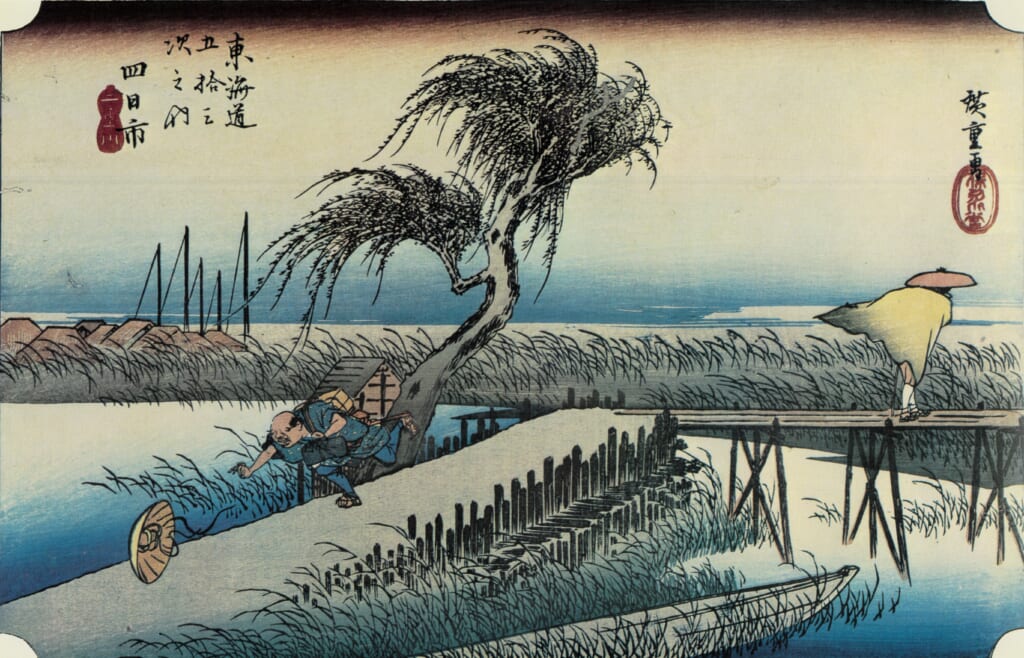
Gyousyo version
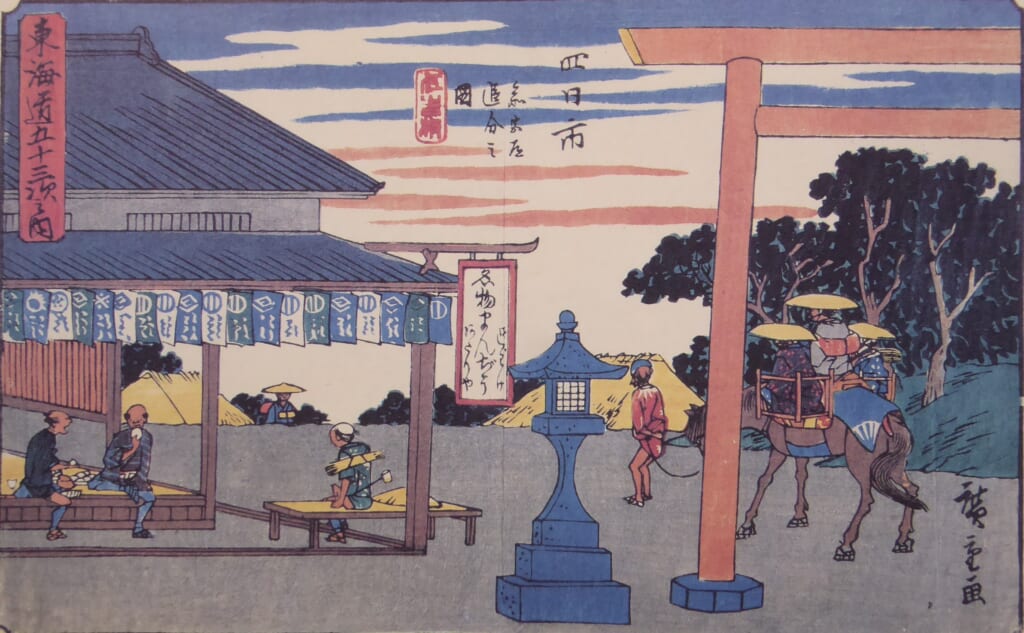
Reisyo version
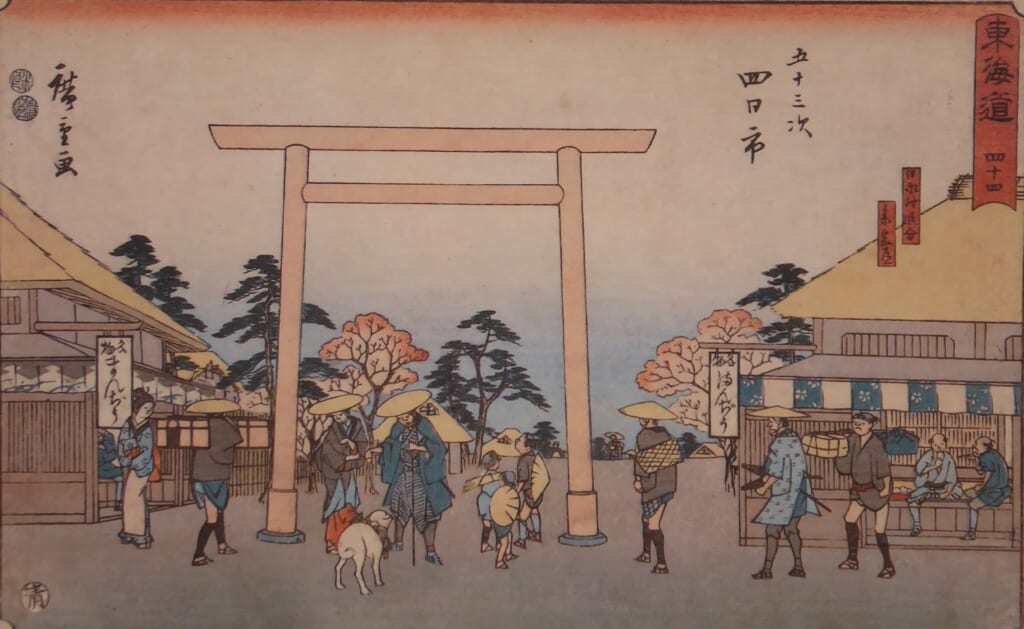
Hokusai version
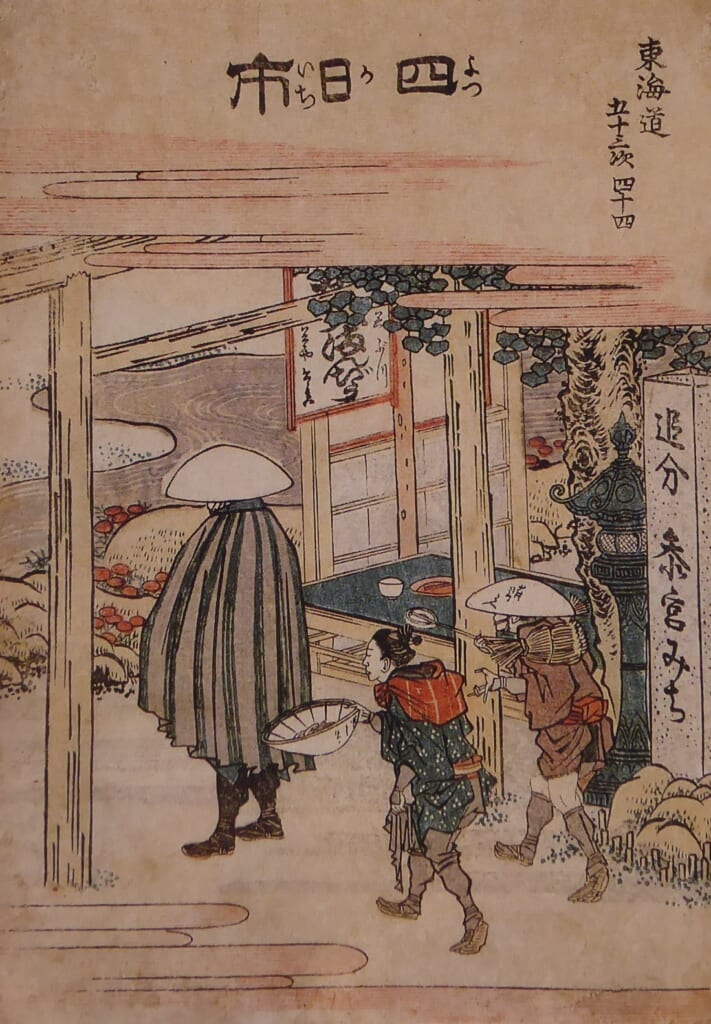
Travel image
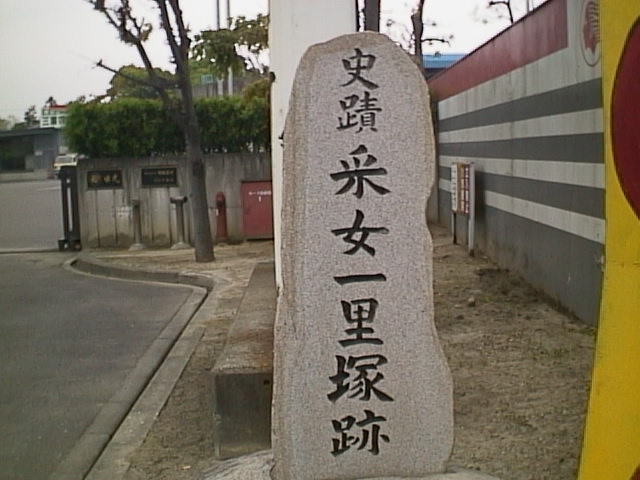
Stamp image
